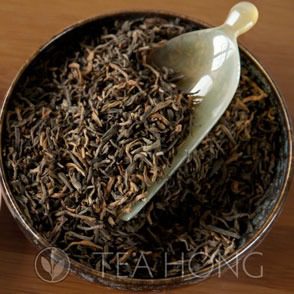

A tea properly stored and matured remains dry, clean and pleasant, such as this Menghai Spring 2004, a classic pu’er.
Some teas, such as classic style oolongs and pu’ers, improve with age through proper storage. If you are into practicing this please make sure you store the unopened pack in proper condition and mark your inventory for the time of storage and a destined time for opening.
Not all teas mature equally
Different makes of different varieties mature differently under different conditions. For example, it took 8 years for us to release our Shengcha Raw Reserve, when the “rawness” of the pu’er maocha tealeaves matures enough for us to think that can be properly classified as a dark tea and the taste palatable; on the other hand, it has taken us only 6 years to do the same to another shengcha type of pu’er, our Yiwu Large Leaf. If without our special darkening process, most shengcha remains quite “raw” after the same amount of time.
Another side of the picture
Another side of the picture is that some teas can be fine as is, but maturing will change its taste profile to what some connoisseurs refer to as mellow. However, this is a less than accurate word for the change. For example, the classic Phoenix oolong Honey Orchid when optimally fired, tastes bright and lively and the aroma floral and fruity. When it is properly matured for 3 years or more, the aroma deepens to a unique woody sweetness and the taste becomes rounder (yes, that’s the mellow part) and full but still lively.
Maturing for tea is a big topic; please return for more info.
For more related reading, please visit these Tea Guardian articles:






